Rome, Italy: A Timeless Journey Through History, Culture, and the Eternal City’s Marvels

Rome, Italy: A Timeless Journey Through History, Culture, and the Eternal City’s Marvels
Welcome to Rome, the Eternal City, where every street, piazza, and monument tells a story that spans thousands of years. Rome is a living museum, a city where ancient history, vibrant culture, and modern life coexist in perfect harmony. From the grandeur of the Roman Empire to the artistic brilliance of the Renaissance, Rome offers an unparalleled experience for every traveler. This comprehensive guide provides everything you need to know for an enriching visit to Rome, including its history, key attractions, unique features, and practical information for tourists.

A Glimpse into the History of Rome
The Founding of Rome
Rome’s legendary origins are steeped in myth and mystery.
- Romulus and Remus: According to Roman mythology, Rome was founded in 753 BC by Romulus, who, along with his twin brother Remus, was raised by a she-wolf. After a quarrel, Romulus killed Remus and became the first king of Rome, naming the city after himself.
- Seven Hills: Rome was built on seven hills: Palatine, Aventine, Capitoline, Esquiline, Quirinal, Viminal, and Caelian. The strategic location along the Tiber River made it an ideal spot for trade and defense.
The Roman Republic and Empire
Rome’s transformation from a small city-state to a vast empire is one of the most remarkable stories in history.
- Roman Republic (509 BC – 27 BC): The Roman Republic was established after the overthrow of the last Roman king. It was characterized by a complex system of government with elected officials, including the Senate. Rome expanded its influence through military conquest and alliances.
- Roman Empire (27 BC – AD 476): The Republic eventually gave way to the Roman Empire, with Augustus as the first emperor. The empire reached its zenith under Emperor Trajan, stretching from Britain to the Middle East. Rome became the heart of this vast empire, adorned with monumental architecture, grand temples, and bustling forums.
The Middle Ages and Renaissance
The fall of the Roman Empire in AD 476 marked the beginning of the Middle Ages in Rome.
- Medieval Rome: During the Middle Ages, Rome became the center of the Christian world. The Papacy rose to power, and Rome became the seat of the Catholic Church. Despite invasions and plagues, the city remained a vital religious and cultural center.
- The Renaissance (14th – 17th centuries): The Renaissance brought a revival of art, culture, and learning to Rome. The city became a canvas for artists like Michelangelo, Raphael, and Bernini, who created some of the most iconic masterpieces in history.
Modern Rome
Today, Rome is a vibrant, cosmopolitan city that blends its ancient heritage with modern life.
- Italian Unification: Rome became the capital of the newly unified Kingdom of Italy in 1871. Since then, it has continued to grow and develop, becoming a major political, cultural, and economic hub.
- World Heritage Site: The historic center of Rome, along with the Vatican City, is a UNESCO World Heritage site, recognized for its unparalleled cultural and historical significance.
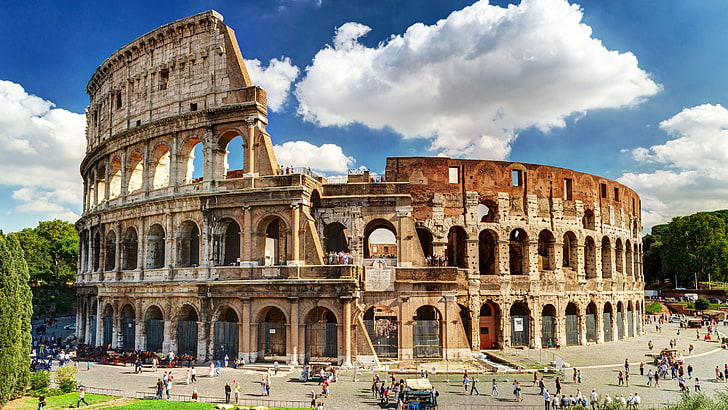
Key Attractions of Rome
The Colosseum (Colosseo)
The Colosseum is one of Rome’s most iconic landmarks and a symbol of the grandeur of the Roman Empire.
- Ancient Amphitheater: Built between AD 70-80, the Colosseum is the largest amphitheater ever constructed. It could hold up to 50,000 spectators who gathered to watch gladiatorial contests, animal hunts, and public spectacles.
- Architectural Marvel: The Colosseum’s design is a masterpiece of ancient engineering, featuring a complex system of vaults and arches. Visitors can explore the arena, the underground chambers where gladiators prepared for combat, and the upper levels offering panoramic views of Rome.
- Cultural Significance: The Colosseum remains a powerful symbol of Rome’s history, and it continues to inspire awe in visitors from around the world.
The Roman Forum (Foro Romano)
The Roman Forum was the political, religious, and social heart of ancient Rome.
- Historical Significance: The Forum was the center of public life in Rome, where citizens gathered for elections, criminal trials, public speeches, and religious ceremonies. It was surrounded by important government buildings, temples, and monuments.
- Key Sites: Visitors can explore the ruins of the Temple of Saturn, the Arch of Titus, the House of the Vestal Virgins, and the Curia (Senate House). The Via Sacra, the main street of the Forum, leads from the Colosseum to the Capitoline Hill.
- Cultural Legacy: The Forum offers a glimpse into the daily life of ancient Romans and the grandeur of the Roman Empire. It’s a must-visit for history enthusiasts and anyone interested in the origins of Western civilization.
The Pantheon
The Pantheon is one of the best-preserved ancient Roman buildings and a marvel of architectural ingenuity.
- Temple to All Gods: Originally built as a temple dedicated to all the Roman gods, the Pantheon was completed around 126 AD under Emperor Hadrian. Its name comes from the Greek words “pan” (all) and “theos” (gods).
- Architectural Feat: The Pantheon’s most striking feature is its massive dome, which was the largest in the world for over 1,300 years. The oculus, a 9-meter-wide opening at the top of the dome, allows natural light to flood the interior and symbolizes the connection between the temple and the heavens.
- Christian Church: In the 7th century, the Pantheon was converted into a Christian church, which helped preserve it through the centuries. It is also the final resting place of several important figures, including the artist Raphael.
Vatican City and St. Peter’s Basilica
Vatican City is the smallest independent state in the world and the spiritual center of the Roman Catholic Church.
- St. Peter’s Basilica: St. Peter’s Basilica is one of the most important and impressive churches in the world. It was built on the site where St. Peter, one of Jesus’ apostles and the first Pope, is believed to be buried. The basilica’s magnificent interior, designed by Michelangelo and other Renaissance masters, includes the famous Pietà sculpture and the awe-inspiring dome.
- The Vatican Museums: The Vatican Museums house one of the world’s most extensive art collections, including masterpieces by Raphael, Leonardo da Vinci, and Caravaggio. The highlight is the Sistine Chapel, with its breathtaking ceiling painted by Michelangelo.
- St. Peter’s Square: The vast St. Peter’s Square, designed by Gian Lorenzo Bernini, is a gathering place for pilgrims and visitors from around the world. The square is framed by a colonnade of 284 columns and features an Egyptian obelisk at its center.
The Trevi Fountain (Fontana di Trevi)
The Trevi Fountain is one of Rome’s most famous and beloved landmarks.
- Baroque Masterpiece: Designed by Nicola Salvi and completed in 1762, the Trevi Fountain is a stunning example of Baroque art. The fountain features a grand central figure of Oceanus, the god of water, flanked by tritons and seahorses.
- Coin Tossing Tradition: Legend has it that tossing a coin into the fountain guarantees a return to Rome. An estimated 3,000 euros are thrown into the fountain each day, with the money collected and donated to charity.
- Cultural Icon: The Trevi Fountain has been featured in numerous films, most famously in Federico Fellini’s “La Dolce Vita.” It’s a must-visit spot for tourists seeking a quintessential Roman experience.
Piazza Navona
Piazza Navona is one of Rome’s most beautiful and lively squares.
- Baroque Architecture: The square is known for its stunning Baroque architecture, including the Fountain of the Four Rivers by Bernini, the Church of Sant’Agnese in Agone, and the Palazzo Pamphilj. The square’s elongated shape follows the outline of the ancient Stadium of Domitian.
- Vibrant Atmosphere: Piazza Navona is a bustling hub of activity, with street performers, artists, cafes, and gelato shops. It’s a perfect place to relax and soak in the lively atmosphere of Rome.
- Seasonal Events: The square hosts various events throughout the year, including Christmas markets, art exhibitions, and music festivals, making it a dynamic part of Roman life.
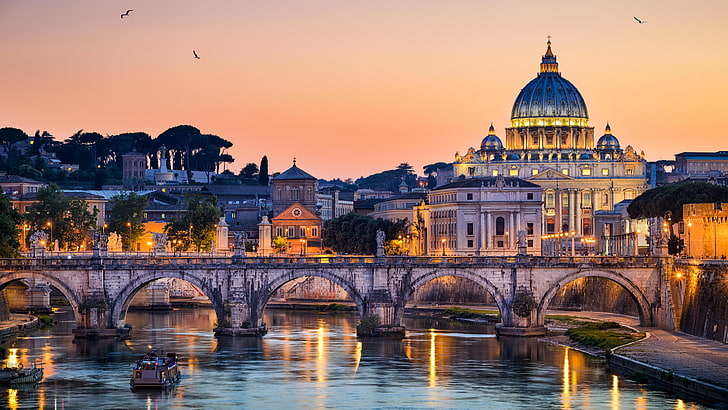
Unique Features of Rome
Roman Cuisine
Rome’s culinary scene is as rich and diverse as its history.
- Classic Roman Dishes: Don’t miss the chance to try classic Roman dishes such as Carbonara (pasta with eggs, cheese, pancetta, and pepper), Cacio e Pepe (pasta with cheese and black pepper), and Saltimbocca (veal with prosciutto and sage).
- Local Markets: Explore Rome’s vibrant food markets, such as Campo de’ Fiori and Mercato Testaccio, where you can sample fresh produce, cheeses, meats, and local specialties.
- Gelato: Rome is famous for its gelato, and there are countless gelaterias throughout the city. Be sure to try flavors like pistachio, hazelnut, and stracciatella for a true Roman treat.
Roman Art and Architecture
Rome is a treasure trove of art and architecture, spanning thousands of years.
- Renaissance and Baroque Masterpieces: Rome is home to countless works of art by masters like Michelangelo, Raphael, Caravaggio, and Bernini. Visit the Galleria Borghese, the Capitoline Museums, and the Vatican Museums to see some of the world’s most famous paintings and sculptures.
- Ancient Roman Ruins: Rome’s ancient ruins, such as the Colosseum, the Roman Forum, and the Baths of Caracalla, offer a glimpse into the grandeur of the Roman Empire. These sites are a testament to Rome’s enduring legacy as a center of power, culture, and innovation.
Practical Information for Tourists
Getting There
Rome is easily accessible by various modes of transportation.
- By Air: Rome is served by two major airports: Leonardo da Vinci–Fiumicino Airport (FCO) and Ciampino Airport (CIA). Fiumicino is the main international airport, while Ciampino handles low-cost airlines and domestic flights. Both airports are well-connected to the city center by train, bus, and taxi.
- By Train: Rome’s main train station, Termini, is a major hub for domestic and international trains. High-speed trains connect Rome to other major Italian cities like Florence, Venice, Milan, and Naples, as well as international destinations.
- By Car: Rome is accessible by car via the A1 motorway, which runs from the north to the south of Italy. However, driving in Rome can be challenging due to traffic and limited parking. It’s advisable to use public transportation or taxis to get around the city.
Getting Around
Rome’s public transportation system is efficient and covers most areas of the city.
- Metro: Rome’s metro system has three lines (A, B, and C) that connect key attractions and neighborhoods. The metro is fast and convenient, especially for longer distances.
- Buses and Trams: Rome has an extensive network of buses and trams that operate throughout the city. Tickets are valid for all modes of public transportation and can be purchased at metro stations, tobacco shops, or newsstands.
- Walking: Many of Rome’s attractions are within walking distance of each other, particularly in the historic center. Walking is one of the best ways to explore the city and discover hidden gems.
Accommodation
Rome offers a wide range of accommodation options to suit all budgets, from luxury hotels to budget hostels.
- Luxury Hotels: For a luxurious stay, consider booking a room at the Hotel Hassler, located near the Spanish Steps, or the St. Regis Rome, known for its opulent interiors and world-class service.
- Boutique Hotels: If you prefer something more intimate, there are plenty of boutique hotels in Rome, such as Hotel Campo de’ Fiori, a charming hotel with a rooftop terrace, or G-Rough, a design hotel located in a historic building near Piazza Navona.
- Budget Options: For budget-conscious travelers, Rome has numerous hostels and budget hotels, such as The Beehive, a cozy hostel near Termini Station, or Hotel Doria, a budget hotel near the Colosseum.
Dining and Shopping in Rome
Dining Options
Rome offers a diverse culinary scene, from traditional trattorias to modern gourmet restaurants.
- Traditional Trattorias: Enjoy a meal at one of Rome’s traditional trattorias, where you can savor authentic Roman dishes made with fresh, local ingredients. Popular trattorias include Da Enzo al 29 in Trastevere and Armando al Pantheon near the Pantheon.
- Modern Cuisine: Rome also has a growing number of modern restaurants that offer innovative takes on Italian cuisine. Try Roscioli for a contemporary dining experience with a focus on high-quality ingredients.
- Street Food: Don’t miss Rome’s street food, such as supplì (fried rice balls with mozzarella) and pizza al taglio (pizza by the slice). These delicious snacks are perfect for a quick bite while exploring the city.
Shopping in Rome
Rome offers a wide range of shopping experiences, from luxury boutiques to local markets.
- Via del Corso: Via del Corso is one of Rome’s main shopping streets, lined with fashion boutiques, department stores, and international brands. It’s a great place to shop for clothing, accessories, and souvenirs.
- Campo de’ Fiori Market: Campo de’ Fiori is one of Rome’s oldest markets, offering fresh produce, flowers, spices, and local delicacies. It’s a lively place to experience the local culture and pick up some unique products.
- Designer Boutiques: Rome is home to some of the world’s top fashion designers, including Valentino, Fendi, and Bulgari. The streets around Via Condotti and Piazza di Spagna are lined with luxury boutiques, perfect for high-end shopping.
Must-See Highlights at Rome
The Colosseum (Colosseo)
The Colosseum is one of Rome’s most iconic landmarks and a symbol of the grandeur of the Roman Empire.
- Ancient Amphitheater: Built between AD 70-80, the Colosseum is the largest amphitheater ever constructed. It could hold up to 50,000 spectators who gathered to watch gladiatorial contests, animal hunts, and public spectacles.
- Architectural Marvel: The Colosseum’s design is a masterpiece of ancient engineering, featuring a complex system of vaults and arches. Visitors can explore the arena, the underground chambers where gladiators prepared for combat, and the upper levels offering panoramic views of Rome.
- Cultural Significance: The Colosseum remains a powerful symbol of Rome’s history, and it continues to inspire awe in visitors from around the world.
The Roman Forum (Foro Romano)
The Roman Forum was the political, religious, and social heart of ancient Rome.
- Historical Significance: The Forum was the center of public life in Rome, where citizens gathered for elections, criminal trials, public speeches, and religious ceremonies. It was surrounded by important government buildings, temples, and monuments.
- Key Sites: Visitors can explore the ruins of the Temple of Saturn, the Arch of Titus, the House of the Vestal Virgins, and the Curia (Senate House). The Via Sacra, the main street of the Forum, leads from the Colosseum to the Capitoline Hill.
- Cultural Legacy: The Forum offers a glimpse into the daily life of ancient Romans and the grandeur of the Roman Empire. It’s a must-visit for history enthusiasts and anyone interested in the origins of Western civilization.
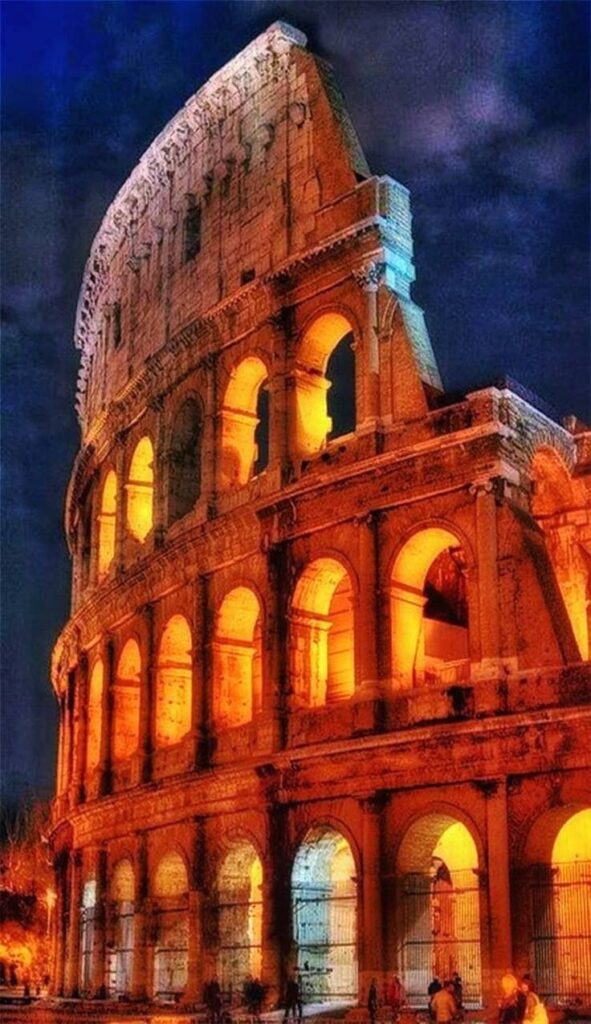
The Pantheon
The Pantheon is one of the best-preserved ancient Roman buildings and a marvel of architectural ingenuity.
- Temple to All Gods: Originally built as a temple dedicated to all the Roman gods, the Pantheon was completed around 126 AD under Emperor Hadrian. Its name comes from the Greek words “pan” (all) and “theos” (gods).
- Architectural Feat: The Pantheon’s most striking feature is its massive dome, which was the largest in the world for over 1,300 years. The oculus, a 9-meter-wide opening at the top of the dome, allows natural light to flood the interior and symbolizes the connection between the temple and the heavens.
- Christian Church: In the 7th century, the Pantheon was converted into a Christian church, which helped preserve it through the centuries. It is also the final resting place of several important figures, including the artist Raphael.
Conclusion
Rome, with its rich history, stunning architecture, vibrant cultural scene, and welcoming atmosphere, offers an unforgettable experience for all who visit. From the majestic Colosseum and the awe-inspiring Pantheon to the artistic treasures of the Vatican and the lively streets of Trastevere, Rome provides a diverse range of attractions that cater to every interest. Plan your trip to Rome and immerse yourself in the beauty, history, and timeless charm of the Eternal City. Embrace the opportunity to explore, discover, and create lasting memories in one of the world’s most beloved destinations.
-
Rome, Italy: A Timeless Journey Through History, Culture, and the Eternal City’s Marvels
Rome, Italy: A Timeless Journey Through History, Culture, and the Eternal City’s Marvels Welcome to Rome, the Eternal City, where every street, piazza, and monument tells […]

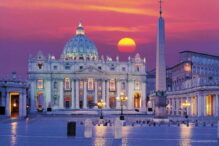
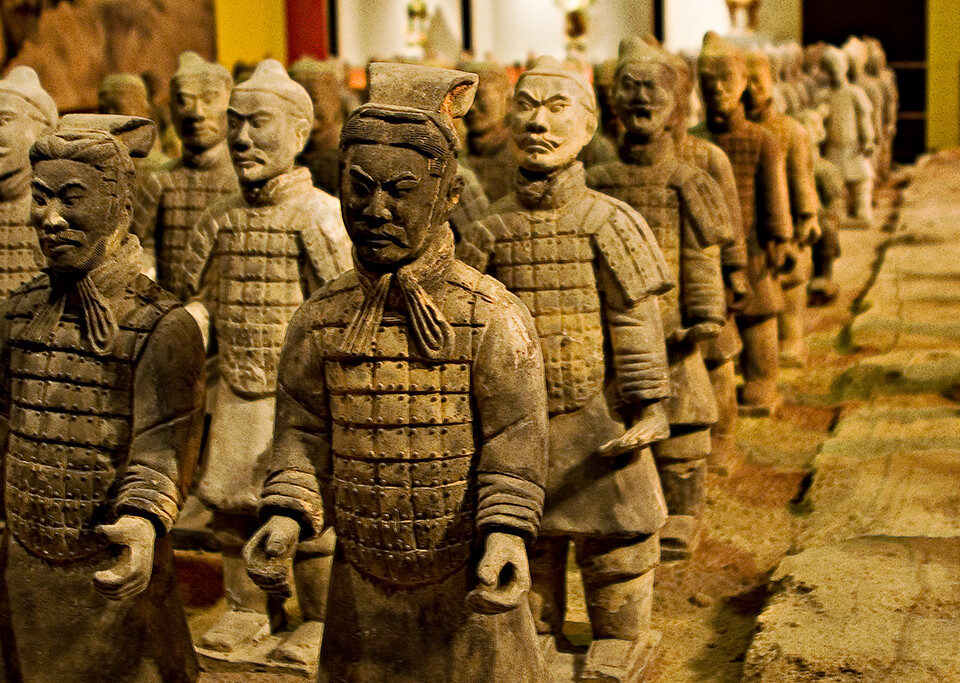
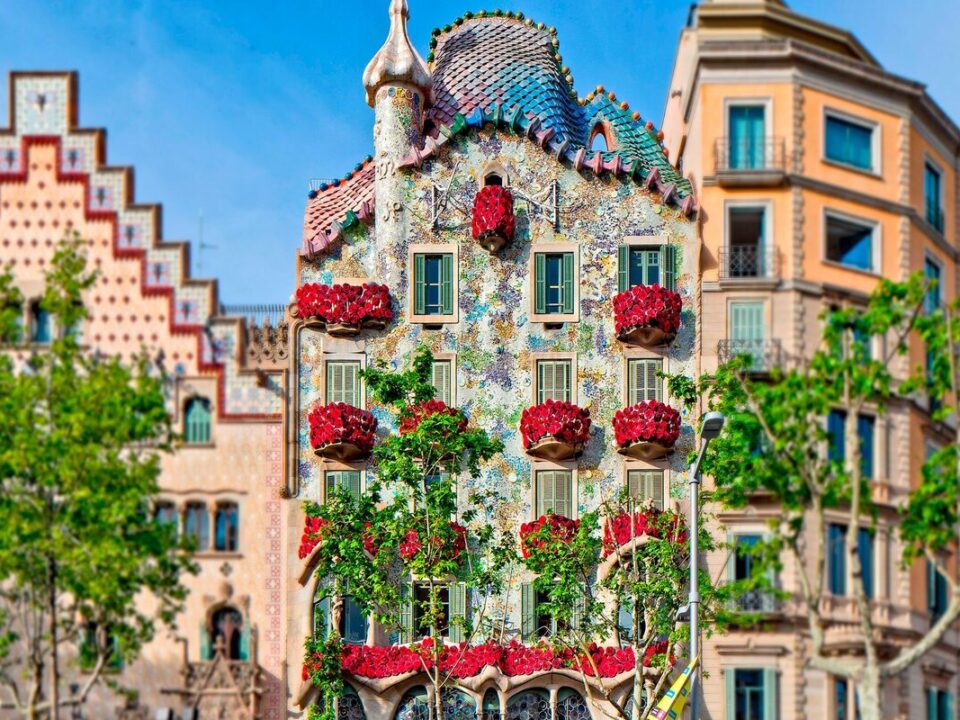

6 Comments
Amazing post
[…] Italian dish, is beloved worldwide for its creamy, cheesy, and indulgent flavor. Originating in Rome, Italy, this dish has a fascinating history and a simplicity that makes it a favorite among home […]
[…] Spaghetti Carbonara is somewhat shrouded in mystery, but it is widely believed to have emerged in Rome during World War II. One popular theory suggests that American soldiers stationed in Italy combined […]
[…] Alfredo has its origins in Rome, Italy, where it was created by Alfredo di Lelio in the early 20th century. Alfredo invented the […]
[…] as the Flavian Amphitheater, is one of the most iconic and well-preserved monuments of ancient Rome. Located in the heart of Rome, Italy, this architectural marvel has stood […]
[…] Rome, Italy: A Timeless Journey Through History, Culture, and the Eternal City’s Marvels […]